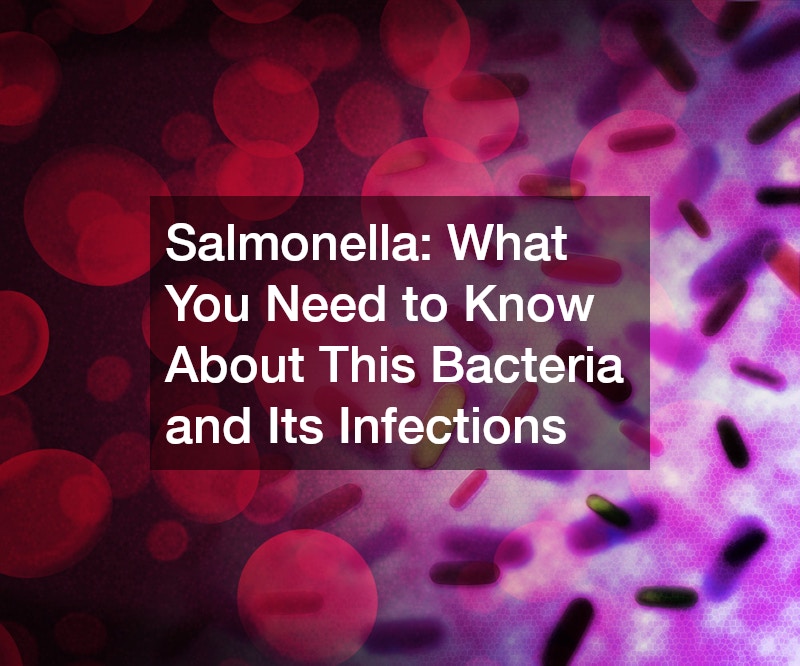
Salmonella infections, known as salmonelloses, are illnesses caused by the Salmonella bacteria, which are Gram-negative, rod-shaped, and flagellated. These bacteria are resilient and able to grow both in the presence and absence of oxygen. They are classified into two main species: Salmonella enterica and Salmonella bongori. Among these, S. enterica is further divided into six subspecies and is responsible for the majority of salmonella infections in humans.
Understanding Salmonella Species and Serotypes
Salmonella bacteria are differentiated by their serotypes, or serovars, which are determined by the variations of antigens present on their surface. The two primary antigenic determinants are the O antigens found on the outer bacterial membrane and the H antigens on the flagella. To date, over 2,500 serotypes of Salmonella have been identified, with the vast majority belonging to the S. enterica subspecies enterica. This particular subspecies is responsible for 99% of salmonella infections in humans.
How Salmonella Spreads
Salmonella bacteria are primarily transmitted through the oral-fecal route. Infection typically occurs when a person ingests food or water contaminated with feces from infected humans or animals. Common sources of contamination include raw or undercooked meats, poultry, seafood, eggs, dairy products, and fresh fruits and vegetables. The bacteria need to be ingested in relatively large quantities to survive the acidic environment of the stomach. Once in the intestine, they induce their own phagocytosis, entering the cells of the intestinal mucosa and triggering an inflammatory response.
Symptoms and Complications
Salmonella infections present two main types of syndromes: gastroenteritis and enteric fevers.
Gastroenteritis, often referred to as stomach flu, is caused by non-typhoidal serotypes of Salmonella. This condition is usually self-limiting, meaning symptoms such as diarrhea, vomiting, nausea, headache, abdominal cramps, and muscle aches typically resolve without the need for antibiotics. However, severe cases can occur, particularly in immunocompromised individuals, young children, and the elderly. In developing countries, multidrug-resistant strains of Salmonella are a significant cause of bacteremia in children. The incubation period for non-typhoidal salmonellosis ranges from 6 hours to 2 days, with symptoms usually lasting up to 10 days.
Enteric fevers include typhoid fever and paratyphoid fever. These conditions are more severe and are caused by typhoidal serotypes of Salmonella. Enteric fevers are characterized by a gradually increasing fever that may rise from a low to high grade over several days, potentially lasting a month or more. Additional symptoms can include headache, abdominal pain, diarrhea or constipation, an enlarged liver and spleen, and occasionally a rash of rose-colored spots on the trunk. The incubation period for enteric fevers ranges from 1 to 3 weeks. If left untreated, typhoid fever can be life-threatening with high mortality rates.
Chronic Carriers and Transmission
Typhoidal serotypes can only be transmitted among humans, and asymptomatic chronic carriers, known colloquially as “typhoid Marys,” can spread the disease. A chronic carrier is someone who continues to shed bacteria in their stool for more than a year after the initial infection, despite showing no symptoms. Nearly 4% of patients with enteric fever may become chronic carriers. Chronic carriers are rare in non-typhoidal infections due to the primary animal reservoir for these bacteria.
Diagnosis and Treatment
Diagnosis of salmonella infections involves isolating and serotyping the bacteria from stool or blood samples. Due to widespread antibiotic resistance, susceptibility testing is crucial to determine the appropriate treatment. While vaccines are available for typhoid fever, there are currently no vaccines for paratyphoid fever or non-typhoidal salmonellosis. Preventive measures include safe food and water practices, as well as frequent handwashing to reduce the risk of infection.
Prevention
Preventing salmonella infections involves a combination of food safety practices, hygiene, and maintaining clean water sources. Here are some essential strategies:
- Safe Food Handling: Always cook meat, poultry, and seafood to the recommended temperatures to kill harmful bacteria. Use separate cutting boards and utensils for raw and cooked foods to prevent cross-contamination. Wash fruits and vegetables thoroughly before eating.
- Proper Food Storage: Refrigerate perishable foods promptly and at the correct temperatures to slow bacterial growth. Avoid consuming foods that have been left out at room temperature for extended periods.
- Hand Hygiene: Wash your hands with soap and water before handling food, after using the bathroom, and after contact with animals. Good hand hygiene is crucial in preventing the spread of salmonella and other pathogens.
- Clean Water: Ensure that your water supply is safe and clean. While a residential water softener helps improve water quality by reducing mineral content and can support overall water filtration systems, it’s important to also use water filters that are certified to remove pathogens if your water source is at risk.
- Avoid High-Risk Foods: Be cautious with high-risk foods such as raw eggs, unpasteurized dairy products, and undercooked meats. These foods are more likely to harbor salmonella and other bacteria.
In conclusion, understanding the nature of Salmonella bacteria, their modes of transmission, and the symptoms associated with different types of salmonella infections can help in both prevention and management. By adhering to good hygiene practices and being aware of the sources of contamination, individuals can significantly reduce their risk of contracting these potentially serious infections.
.

